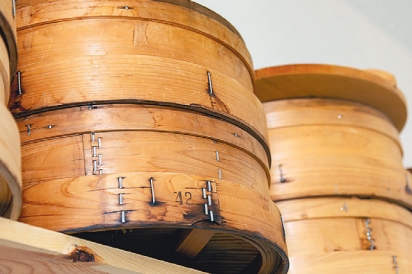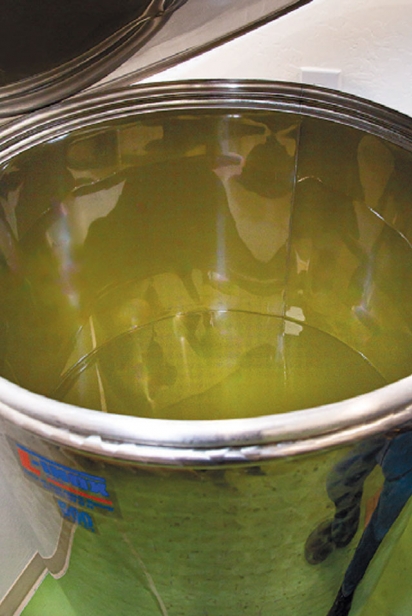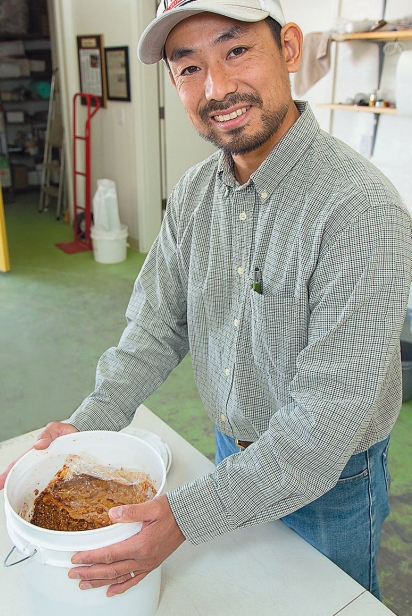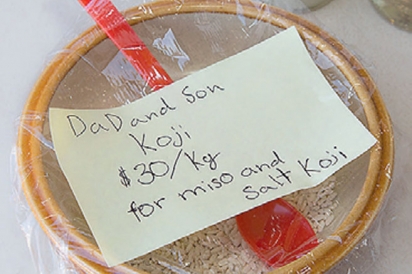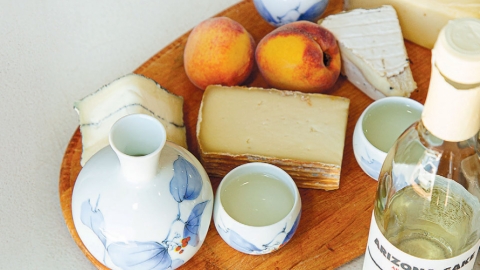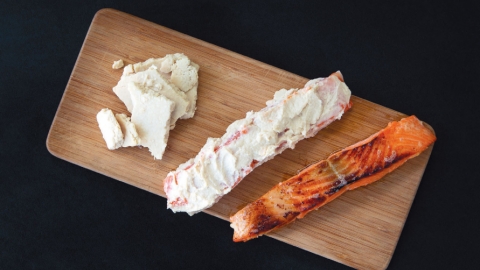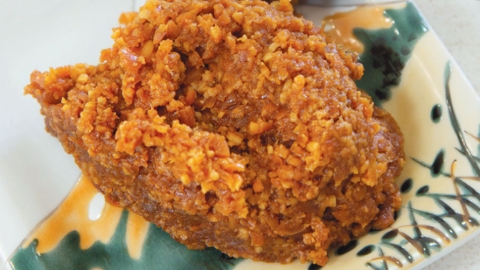Koji: A Deeper Dive with Arizona Sake
First I started with yeast, learning to make my own bread. I got to know how this rather controlled fermentation worked and then I became inspired by sourdough. With a slurry of rye flour I captured wild yeasts from the plants around my house or wherever I was working at the time to create truly local sourdough breads.
As fermentation became popular, I experimented with lacto-fermented vegetables, yogurt, shrubs, pickles, beer, hard cider and soft cheese.
I thought I had done it all. Now, to my surprise, there is a new microbe on my butcher block: koji, or Aspergillus oryzae.
Koji is the magic responsible for creating wonderful umami- rich miso, mirin, and tamari and shoyu soy sauces and it is the primary ferment for sake. The koji mold comes in various strains that work on wheat, barley, soy or rice. Koji is currently having a big moment in the culinary world. Chefs are experimenting with it as a marinade for fish and poultry, and as a seasoning for vegetables. The enzymes work to break down proteins and tenderize flesh, while developing flavor.
I first heard of koji as I started preparing for a visit with Atsuo Sakurai, master sake maker and owner of Arizona Sake, in Holbrook, AZ. Unlikely as it sounds to have a sake producer in the high desert of Arizona, Sakurai has built a successful business and won several medals and recognition in Japan for his small-batch artisanal sake.
Sake undergoes two stages and types of fermentation. The process starts with specially polished varieties of rice that are selected for sake making. Sakurai first steams the rice in traditional bamboo baskets, then he sows it with a selected strain of koji and leaves it to ferment on large wooden trays until it produces a fluffy white mycelium among the grains.
As it develops, the koji breaks down the rice starches into sugars. After a couple of days of fermentation, Sakurai adds water and introduces yeast that converts the sugars into alcohol. This second fermentation occurs in a large steel tank and lasts for a month. After the second fermentation, the whole mixture is emptied onto a large tray and pressed. The extracted sake liquid is then ready to bottle.
Sounds simple, but it is a delicate operation wherein the type of rice, the strain of koji mold, the materials in which the fermentation occurs and factors such as water quality, temperature and humidity all come into exquisite synergy in developing the final quality and flavor of sake.
The koji mold was “domesticated” around the same time that rice was domesticated, about 8,000 years ago. Amidst a wild, poisonous strain, black in color, people discovered and selected a benign white strain of the mold that has evolved into the various koji strains that are used today in Japan.
How humankind came to select and “domesticate” koji and other invisible microbes to the benefit of food preservation, health and gastronomy is a marvel of our human power of observation and the effort of trial and error. Before the advent of modern science, fermentation must have seemed like magic. Consider kefir and yogurt: A goat or sheep stomach used for a flask converted raw milk into a stable and healthful beverage for shepherds out in the mountains. Or sauerkraut: Salt cabbage, pack it down, and it ferments into a long-lasting, delicious pickle. Put cheese in a dark cool cave to ripen, and voila! Roquefort!
On a deeper level this discovery of fermentation reflects intelligent consideration of possibilities that arise from harmonious collaboration with the natural world, as opposed to an impulse to dominate it.
It is this Zen aspiration for balance, purity and creative partnership with the unseen living microbes that infuses Sakurai’s artisan sake craft. Commercial sake often includes additives such as alcohol or acidifiers to enhance the final product, he says. Sakurai likes to keep the production small and handson so that he can manage it artfully, and sustainably.
When asked if he plans to expand his business, Sakurai says, “My philosophy is that there is always pressure to produce more, more, more. What follows is waste, environmental destruction, depleted resources. This does not bring harmony or happiness. I seek a middle ground, to have a good business, maintain high quality and a healthy lifestyle.”
Beyond koji there is sake kasu, the by-product of sake production, the lees left over from making sake, which is good as a marinade, in soups or for making pickles.
Since the rice has gone through two fermentations and has broken down to a paste, the texture is “like a dough,” says Sakurai.
In keeping with the Japanese cultural tenet to not waste anything, Sakurai puts the sake kasu, rich in enzymes and nutrients, to good use. “My goats and chickens love it. It is very nutritious, and sweet. It can also be used as a marinade, especially good with fish and chicken,” he says. He’s even using it to fatten up the Thanksgiving turkey he’s raising.
While highly regarded in Japanese kitchens as a marinade, or an addition to pickles and soups, sake kasu is not well known in the U.S. because little sake is made here. Currently Sakurai provides it to his friend Chef Nobuo Fukuda for use in his restaurant Nobuo at Teeter House in Phoenix. He also supplies Fujiyama Market in Tempe.
So if you love to experiment with the world of microbes in your culinary adventures, give koji and sake kasu a try. They will bring a new world of flavor to your recipes for meat, fish and vegetables.
PURCHASING INFORMATION
Sakurai will directly sell dry koji rice for making miso or marinades, as well as the sake kasu (lees) left over from the sake brewing. Dried koji rice may also be purchased online and in some Asian markets; Cold Mountain is a popular brand.
The Arizona Sake web and Facebook pages list the places in Arizona where the sake is for sale. Products to be shipped out of state can be ordered on the website.
Locally, you can find Sakurai’s sake kasu at Fujiya Market in Tempe, 1355 W. University Dr., #5, Tempe. It’s packaged without much labeling in a zip-top bag on a lower shelf in the cooler; ask one of the clerks for assistance.




